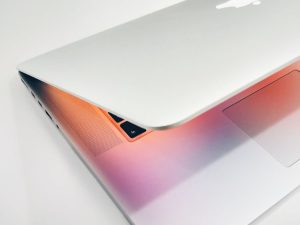
When it comes to laptops, finding the perfect size can be tricky. Too small, and you'll struggle to get work done comfortably. Too big, and your laptop might be bulky and difficult to take with you on-the-go. But what about a 15-inch laptop?
In my experience, a 15-inch laptop is the best balance between size and portability. You'll have enough screen real estate to get your work done comfortably, while still being able to slip it into a backpack or bag with ease. Additionally, many 15-inch laptops offer the perfect balance between performance and affordability.
Whether you're a student, a professional, or just someone looking for a reliable laptop, a 15-inch laptop might just be the perfect fit for you. In this guide, I'll explore some of the best 15-inch laptops on the market, covering a variety of different price points and features. So, let's dive in and find the perfect 15-inch laptop for you!
Picking the Right Processor for Your Laptop
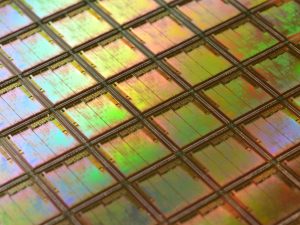
When it comes to choosing the right laptop processor for a 15-inch laptop, there are a few things to consider. While Apple's M-series chips have been dominating the market in terms of single-core performance and battery life, AMD has also captured a significant portion of the laptop CPU market with its latest Ryzen processors. Meanwhile, Intel's latest 13th-generation Core processors are available, but their 12th-generation counterparts still offer excellent value.
If you're using your laptop for audio production, processor speed is not as important as single-core performance when working with plugins or exporting tracks. MacBooks are a popular choice for audio engineers due to their solid performance and long battery life.
If you're looking for the best-of-the-best laptop, go for an H-series processor from Intel or AMD (such as an i7/Ryzen 7). These have better thermal management than U-series processors, but they also have higher TDP and consequently shorter battery life. Meanwhile, U-series processors are ideal for those who prioritize portability over raw power, since they have lower TDP and longer battery life but slightly slower single-core performance. Intel's P series falls somewhere in between H and U series chips in terms of both performance and battery life.
To compare different processors, I recommend using Cinebench R23, as it tests actual usage scenarios, such as working with audio effects or rendering video files. However, don't expect to find a high-end CPU in a budget laptop – you'll need to save up if you want one!
Here are my recommended processors for each budget category:
| Budget | Processor |
|---|---|
| Minimum | i5-1240P; Ryzen 5 6600U |
| Recommended | Ryzen 7 6800H; i7-12650H; Apple M1 Pro |
| High-end | i9-12900H; Ryzen 9 6900HX |
Keep in mind that the above recommendations are just a starting point, and you should always do your research to find the best processor for your needs and budget.
Choosing the Right Graphics Card for Your 15-Inch Laptop
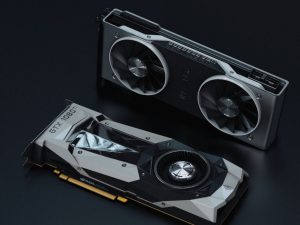
When it comes to deciding on the right graphics card for a 15 inch laptop, there are a few key factors to consider. While Nvidia currently dominates the laptop GPU market, the recent release of the RTX 40 series cards means that there may be some variation in availability and pricing. However, the majority of laptops still use the RTX 30 series cards.
For most daily tasks, integrated graphics will suffice, and dedicated graphics are only necessary for gaming or professional workloads that utilize GPU acceleration. MacBooks, in particular, are optimized to work well with integrated graphics silicon.
It's important to note that laptop GPUs are difficult to evaluate because they are classified into tiers based on wattage. Comparing GPUs based on 3DMark scores can provide an idea of potential performance, but real-world results may vary based on other factors such as CPU and RAM.
Unfortunately, upgrading the graphics card in a laptop is not possible, so it's essential to choose a laptop with a GPU that fits your needs. For longer battery life, look for laptops with Nvidia Optimus technology, and if you want a gaming laptop with a high refresh rate display, consider investing in Advanced Optimus.
Here are some recommended GPUs for 15 inch laptops at different price points:
| Price Range | Recommended GPUs | Expected Performance |
|---|---|---|
| Minimum | RTX 3060 | Entry-level gaming |
| Mid-Range | RTX 3070; RX 6800M | Solid gaming and professional workloads |
| High-End | RTX 3080 | Best-in-class gaming and professional workloads |
Ultimately, the right graphics card for your 15 inch laptop depends on your specific needs and budget. However, keeping these factors in mind should help you make an informed decision.
Power Up Your Laptop With the Right RAM!
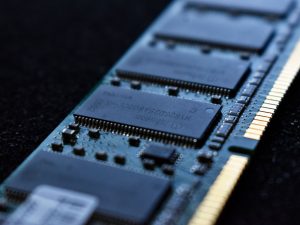
When it comes to laptops, RAM (Random Access Memory) is an essential component for performance. You'll want to make sure that you have enough RAM to suit your needs and that the type of RAM you choose is compatible with your laptop's system.
For mid-range laptops, 16 GB is the sweet spot for most users. High-end laptops can have 32 GB or more depending on their specs. Latest-gen Intel and AMD CPUs support DDR4 and DDR5, although DDR5 is still quite expensive and needs time to mature as a technology.
RAM is especially important when it comes to development work, as most programming tasks require multitasking and a lot of system resources. MacBooks are known for their reliability rather than performance, but if you're looking for a reliable machine for your development tasks, you'll need to make sure it has enough memory. A minimum of 16 GB of RAM should suffice for most users, but if you're working with extremely large files (over 100 GB) or you often use multiple VMs in your workflows, 32 GB might be worth considering.
When looking for the right RAM, make sure it has the correct type and speed. The two main RAM types are DDR3 and DDR4, while the two main speeds are 1600 MHz and 2400 MHz. However, when it comes to laptops, frequency and latency are not that important – focus instead on the RAM size and type.
If you're buying a used MacBook, make sure it has enough RAM to suit your needs – otherwise, you'll have to upgrade it yourself later on. To help you decide on the right RAM for your needs, here's a table of recommended RAM configurations at various price points:
| Price Range | RAM Configuration |
|---|---|
| Budget | 8-16 GB |
| Mid-range | 16-24 GB |
| High-end | 24-32 GB |
The Benefits of an SSD for 15 Inch Laptops

SSDs have become the standard for laptop storage, and PCIe/NVMe M.2 drives are now the fastest on the market. When deciding on the right laptop SSD for a 15-inch laptop, you should consider your budget, storage needs, and usage case.
For budget laptops (<$900), you can expect to get 500 GB of storage. Mid-range laptops ($900-$2000) usually come with 1 TB, and high-end laptops ($2000+) typically have 2 TB.
If you're a video editor or photographer, a fast drive is crucial, and an NVMe drive is recommended for the best performance.
Besides performance, other factors to consider when choosing an SSD include brand reliability, endurance rating, and upgradeability. It's recommended to opt for an upgradeable laptop, as that allows for better storage options down the road.
When it comes to measuring SSD performance, the AS SSD benchmark is an excellent option, testing both sequential and random read/write speeds. However, other benchmarks such as CrystalDiskMark or ATTO can be useful when comparing different types of drives.
If you want your laptop to last for at least five years without any issues, aim for at least 2x the capacity of your current needs when choosing an SSD.
Here is a table of recommended SSDs for different budgets and usage cases:
| Budget | Mid-Range | High-End |
|---|---|---|
| Samsung 970 EVO or WD Blue SN550 | Samsung 970 EVO Plus or Crucial P5 | Samsung 980 PRO or WD Black SN850 |
| Kingston A2000 or ADATA XPG SX6000 Pro | WD Blue SN550 or SK hynix Gold P31 | Kingston KC2500 or Sabrent Rocket 4 Plus |
| Crucial MX500 or SanDisk Ultra 3D | Crucial MX500 or Seagate FireCuda 520 | Crucial P1 or Corsair MP600 CORE |
In conclusion, when deciding on the right laptop SSD for a 15-inch laptop, consider your budget, storage needs, and usage case. An NVMe drive is recommended for performance-intensive tasks like video editing, while other factors such as brand reliability, endurance rating, and upgradeability should also be considered.
A Visual Feast: Choosing the Best 15 inch Laptop Display

If you're in the market for a 15-inch laptop, there are a few things you need to consider when choosing the right display. The display is a crucial component of any laptop, affecting everything from image quality to battery life.
15-inch laptops and their resolution options
The most common display resolution for 15-inch laptops is still Full HD (1920×1080). However, if you're looking for a premium gaming or business laptop, QHD (2560×1440) is a frequent option. For creators, 4K (3840×2160) is the most common resolution.
Panel types (IPS, TN, OLED)
For the most part, I recommend an IPS or IPS-grade panel. TN is only found on the cheapest laptops, and while OLED is becoming increasingly prevalent, it's not yet widespread. OLED has an unbeatable contrast ratio, making it ideal for media consumption and content creation. However, it's not as bright as IPS panels and may suffer from screen burn-in.
Does the refresh rate matter in gaming laptops? Is it necessary if you don't enjoy gaming?
If you're looking for the best gaming laptop, I'd recommend investing in a higher refresh rate rather than a higher resolution. High refresh rate screens are found in the majority of gaming laptops and can deliver more than 60Hz. However, if you don't enjoy gaming, you might not need a high refresh rate.
Brightness, contrast, and color gamut requirements
For qualitative display tests, such as luminosity, contrast, color accuracy & coverage, I recommend at least 280 nits of brightness and a minimum of 90% sRGB color gamut coverage. If you're looking for a high-end laptop display, aim for a minimum of 380 nits and 100% sRGB color gamut coverage.
What you can expect at each price point?
At the minimum price point, you can expect a TN or IPS panel with a brightness level of 280 nits. For a mid-range price point, aim for an IPS panel with 300 nits of brightness and 90% sRGB color gamut coverage. At the high-end price point, you can expect an IPS or OLED panel with a brightness level of 380 nits and 100% sRGB color gamut coverage.
In summary, when choosing the right display for your 15-inch laptop, consider whether you need a high-quality display for your line of work, your preference for resolution or refresh rate, and your budget. Don't forget that if you primarily use your laptop for mobile work, an external display for working from home is an option. In that case, prioritize the external monitor over the laptop's display.
Example: Find a 15-inch laptop that gives you the
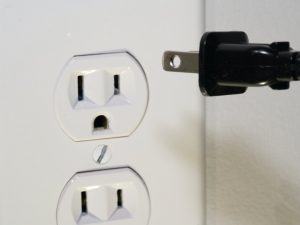
Battery life is one of the most crucial factors to consider when purchasing a laptop, especially for those who are always on the go. While decent battery life (around 6 hours) can be achieved even in budget laptops due to the declining cost of battery tech, power-hungry components like the CPU, GPU, and display can take their toll on battery runtime.
When it comes to MacBook, they are not known for their long battery life, but you can improve it by tweaking some settings. However, they still don't compare to Windows laptops. If you want a MacBook that can last all day without needing to be plugged in, you need at least an 11-inch model or up to a 13-inch model with an Intel Core i5 processor and at least 8 GB of RAM (16 GB would be better).
There are two main ways of measuring laptop battery performance: time until death and runtime under load. I prefer runtime under load because it's more indicative of how long your laptop will last in real-world use cases. Ultrabooks are often thought to have great battery life because they're thin and light, but that's not always the case. They may not perform as well as other laptops in terms of battery runtime due to their processors' power efficiency, so it's best to look at actual runtime tests instead of just thickness/weight when comparing different laptops' batteries.
When deciding on the right laptop battery for a 15-inch laptop, I recommend a minimum of 4 hours of battery life for basic tasks like document editing and web browsing. For more demanding tasks like video editing or gaming, a recommended battery life of 6 hours is preferable. High-end laptops with longer battery life of up to 10 hours may be necessary for those who need their laptop to last through a full workday without needing to be plugged in.
When judging a laptop's battery life, I pay attention to the screen brightness, adaptive brightness, screen resolution, and dimming. These factors affect the power consumption of the display and can significantly impact battery life.
Here is a table of average laptop battery durations at different price points:
| Price Range | Average Battery Life |
|---|---|
| Under $500 | 4-6 hours |
| $500-$1000 | 6-8 hours |
| $1000-$1500 | 8-10 hours |
| Above $1500 | 10+ hours |
Remember that these are just averages and actual battery life may vary depending on the laptop's configuration, usage, and power management settings. Always do your research and read reviews before purchasing a laptop to ensure that you get the right one for your needs.
5 Best Laptops for 15 inch
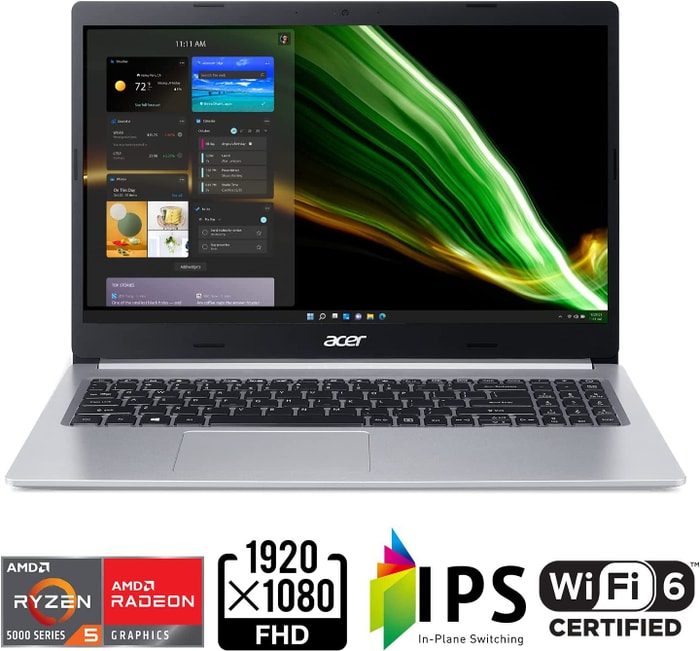 $450
$4501.Acer Aspire 5 A515-45-R74Z
Acer Aspire 5 A515-45-R74Z offers robust performance for a budget 15-inch laptop.- High-quality build
- Powerful CPU performance
- Good battery life
- Fingerprint sensor
- Only 8 GB of RAM
- Display brightness is not up to the mark
- Performance impacted by iGPU
- Windows not preinstalled
Summary
Acer Aspire 5 A515-45-R74Z is a sturdy, lightweight, and elegantly designed laptop with a powerful AMD Ryzen 7 5700U processor, providing a solid performance. However, the AMD Radeon RX Vega 8 and 8 GB of RAM can impact its benchmarks, and the 15-inch display may not be as bright as expected.
Reviews
Alternatives
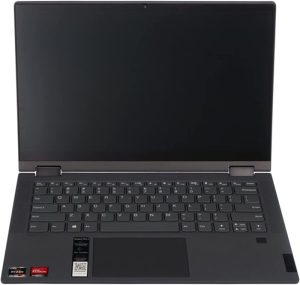 $400
$400Lenovo Ideapad Flex 5
- Fast processor
- Versatile with optional stylus input and backlit keyboard
- Dim and poorly calibrated display with low color-space coverage
- RAM and processor cannot be upgraded
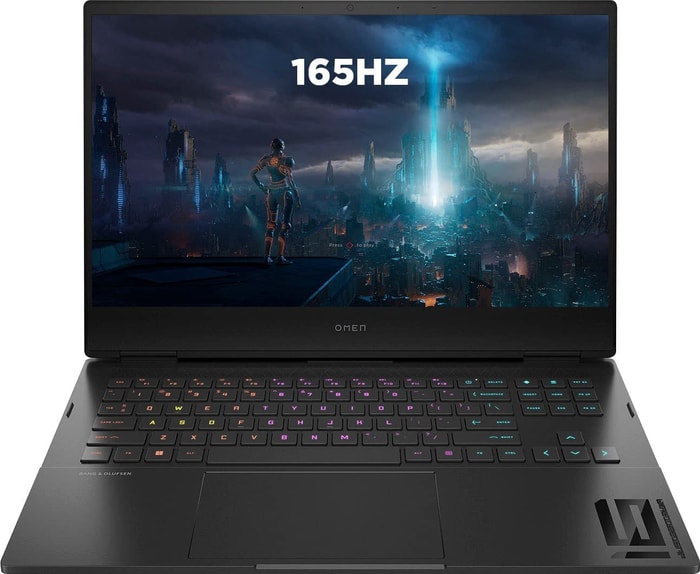 $730
$7302.HP Omen 16
15 inch laptop- Excellent processor (i7-12700H)
- Terrific graphics card (RTX 3060)
- Great display (16.1 IPS)
- Large 1TB SSD
- Mediocre memory amount (16GB)
- Bulky (5.98 lbs)
Alternatives
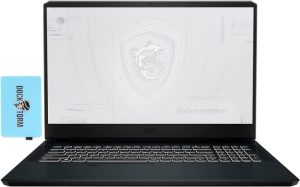 $800
$800MSI WE76 11UK
- Sufficient processor (i7-11800H)
- Solid graphics card (RTX A3000)
- Bulky (6.38 lbs)
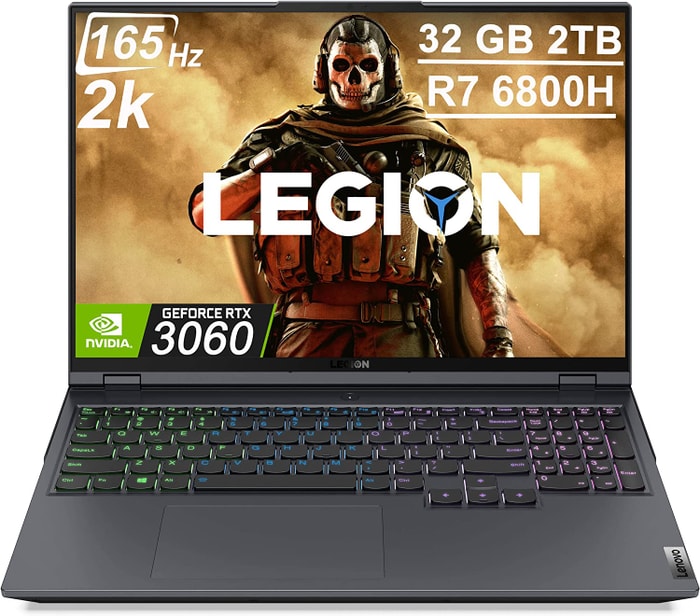 $1,350
$1,3503.Lenovo Legion 5 Pro
Lenovo Legion 5 Pro provides top-notch gaming performance, but is not ideal for those who prioritize battery life.- High quality 165 Hz 16:10 IPS display
- Relatively easy serviceability
- Integrated numpad
- Very fast charging
- Low resolution webcam with no IR or privacy shutter
- Very warm CPUGPU temperatures when gaming
- Moderate-heavy uneven backlight bleeding
- Only average battery life
Summary
With a 150W TGP GeForce RTX 3070 Ti, Lenovo Legion 5 Pro offers great gaming experience. The laptop is easy to service, has a high-quality 165 Hz 16:10 IPS display, and fast charging. However, it lacks Thunderbolt support, has an average battery life, and CPU/GPU temperatures can get high when gaming.
Reviews
Alternatives
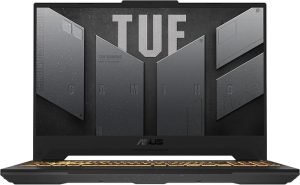 $1,300
$1,300ASUS TUF F15 FX507ZM-ES74
- Faster than most other GeForce RTX 3060 laptops
- 300 Hz IPS panel w full sRGB coverage
- Chassis base and lid exhibit some flexing
- No per-key RGB lighting
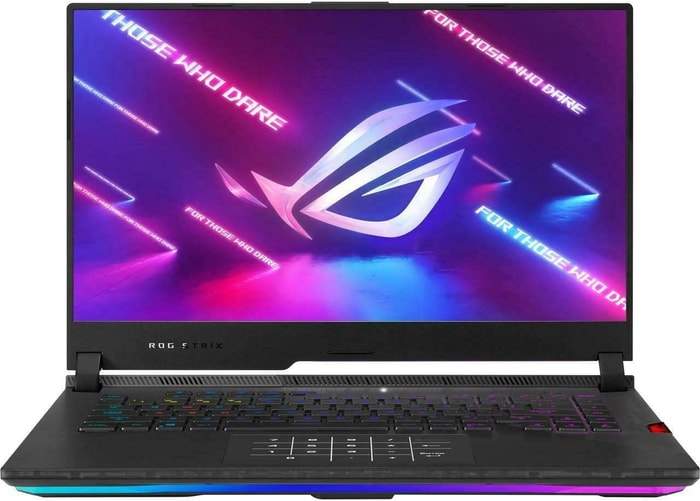 $2,310
$2,3104.ASUS ROG Strix Scar
ASUS ROG Strix Scar 15 - the ultimate gaming machine with some minor flaws.- Sturdy construction
- Fast Wi-Fi 6E
- Excellent response times and no PWM
- Wide color gamut coverage with Dolby Vision support
- Limited display
Summary
The ASUS ROG Strix Scar 15 is a beast of a gaming machine, with a WQHD 240 Hz panel, Intel Alder Lake Core i9-12900H, and Nvidia RTX 3070 Ti. The laptop is sturdy, has excellent Wi-Fi and response times, and delivers unhindered performance. However, it has some cons such as high heat and noise emissions under load, limited display angle, no biometric login, heavy SSD throttling during continuous reads, and a subpar battery life.
Reviews
Alternatives
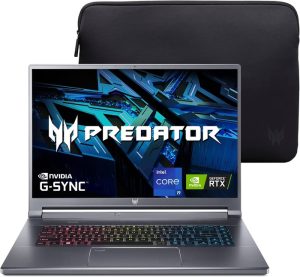 $2,500
$2,500Acer Predator Triton 500
- High performance capabilities
- Excellent, bright 240-Hz display
- Soldered-in RAM
- Inaccessible SSD
 $3,800
$3,8005.ASUS ROG Strix Scar G733CX-XS97
ASUS ROG Strix Scar G733CX-XS97: Top-notch Gaming Performance at a Premium Price- Good QHD panel with 240Hz
- High and stable gaming performance
- Extensive case illumination
- TB4, Wi-Fi 6E, and PCIe 4.0
- Inconsistent SSD performance
- Additional premium for HX CPU isnt worth it
- No webcam
- Electronic
Summary
The ASUS ROG Strix Scar G733CX-XS97 offers a powerful gaming performance with the latest hardware such as the Core i9-12950HX and GeForce RTX 3080 Ti, a fast 240Hz display, and TB4, Wi-Fi 6E, and PCIe 4.0 connectivity. However, it comes at a high price and has inconsistent SSD performance and lacks a webcam.
Reviews
Alternatives
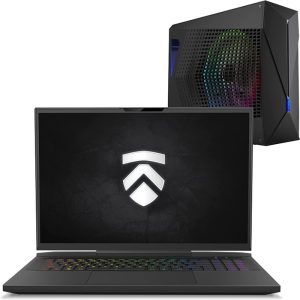 $4,200
$4,200Eluktronics MECH 17 GP2 Liquid Cooled
- Awesome processor (i9-13900HX)
- Splendid graphics card (RTX 4090)
Table of the Best Laptops for 15 inch
| Laptop | Price (approx) |
| Acer Aspire 5 A515-45-R74Z | |
| HP Omen 16 | |
| Lenovo Legion 5 Pro | |
| ASUS ROG Strix Scar | |
| ASUS ROG Strix Scar G733CX-XS97 |

